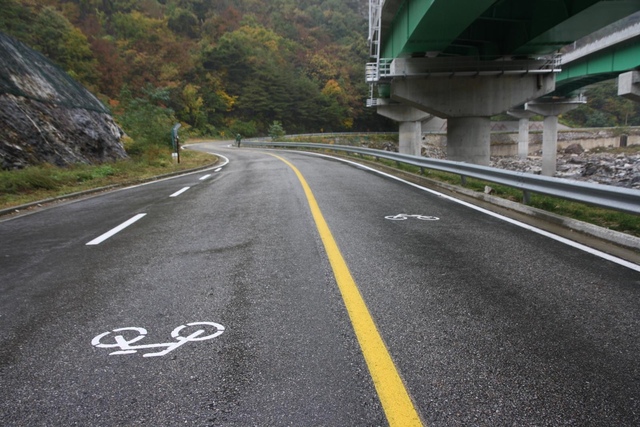By Alastair Smith
On the Pacific Rim there is a country where a government initiative has resulted in a network of off road cycle paths spanning the country. New Zealand's Nga Haerenga? Well maybe some time in the future, but now this describes South Korea.
When you think of South Korea, you're more likely to think of hi-tech industries and the bustling Asian Tiger cities, rather than cycling facilities. So it was something of a revelation to me on a recent cycle touring trip to South Korea to discover a network of off road cycle paths spreading across the country that makes Nga Haerenga look somewhat unambitious.
Initially, finding my way from central Seoul to the Han River bicycle trail, which bisects the capital city, was daunting. It involved negotiating multilane traffic, tunnels, and areas closed off by the US military. However things changed once I was on the trail: a 2m wide lane in each direction, with a 1m path for pedestrians. Every few kilometres there was a rest area, often with bicycle hire, barbeques, etc. While Seoul residents may prefer their excellent metro system for commuting, a fair proportion of the 10 million population seemed to be out on the trail for recreation. People of all ages were taking part, from small children being coaxed along on training bikes, to senior citizens taking a leisurely cruise. Of course, there were plenty of Tour de France wannabes in lycra as well. There are businesses setting up along the trail: cafes, noodle stalls, and even an al fresco cycle gear market.
The Han River trail isn't just an urban facility either: it extends from Inchon, at the mouth of the Han River, to Chungju in the centre of the country. It is part of the Four Rivers Bike Path, on which it is possible to cycle from Seoul, in the north west corner of South Korea, to Busan in the south east, using off road cycle trails and low traffic rural roads.
The Han River trail was started around 2008, and is only one of a number of cycle trails that the government is promoting. In many cases the trails are being developed as part of river valley environmental restoration, but the investment is far from token applications of green paint and the odd sign. Path widths and gradients are almost always generous, and picnic and toilet facilities appear frequently. On one trail being constructed for the coming summer, pergolas were being erected over the trail so cyclists would be shaded by vines during the hot Korean summer. Where the cycle trails followed lakes, there were some inventive solutions of floating boardwalks and cantilevered trails (lessons for the Petone-Ngauranga gap?).
There are some efforts to integrate cycling with public transport. It is possible to take bikes on the Seoul Metro system, and there were bike parks at railway stations.
For a non-Korean, the main issue is finding out about the cycle trails. Most official information appears to be in Korean. The best english language source of information is the website Bicycling in Korea http://user.chollian.net/~boonstra/korea/cycle.htm , maintained by Jan Boonstra, a Seoul expat. But I suspect even Jan has trouble keeping track of the burgeoning trails. On my trip I'd frequently ask about trails, be told by knowledgeable locals that there wasn't one, then find a few kilometres down the road a brand new high quality off road cycle path.
I didn't make it to Sangju, which has the reputation of being the Bicycle Capital of South Korea. Here the local government has invested heavily in separated cycle facilities and bike parking - there's supposed to be a bike park every 100m on main streets. Sangju boasts two bikes per household, and students flood the streets on their bikes when school is out for the day.
South Korea is not yet the Denmark of Asia. Few people cycle commute in Seoul, and there are only a few cycle lanes to facilitate cycling in the central area. Main highways are daunting if it does become necessary to use them: 3-4 lanes in each direction of high speed traffic, although there are generous shoulders. A particular challenge in cycling through the mountains (and Korea is a mountainous country) are the tunnels - up to 3km with high speed traffic. However they are well lit, and there is an adequate shoulder.
Can we learn some lessons from South Korea? To be fair, the higher population density, and the fact that many routes are following river plains, may make it easier for the South Koreans to provide long distance cycle routes than for NZ to implement Nga Haerenga on such a scale. But it is impressive to experience a long distance trail network in a country not that dissimilar to NZ in topography, and consider what Nga Haerenga could become if a similar commitment of resources was available.
More info about Alastair's cycle tour can be found at: http://alastairgsmith.blogspot.co.nz/2012/11/kimchi-power-cycletouring-i...
 Road in South Korea: Old main road which is a now cycleway, East of Wontong
Road in South Korea: Old main road which is a now cycleway, East of Wontong
